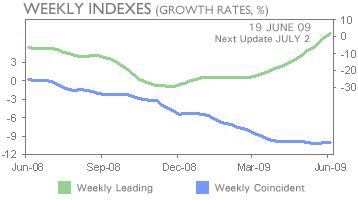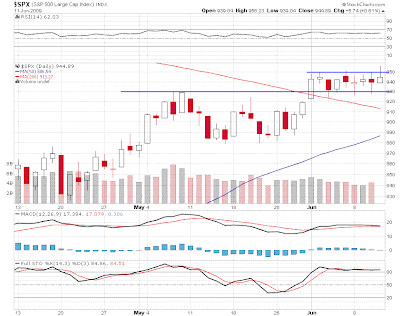Eduardo Levy-
Yeyati, Director and Head of Emerging Markets Strategy at
Barclays Capital, had a rather good post "
Is Latvia the new Argentina?" at
voxeu.org.
Latvians, if sticking to internal deflation story, should focus very much on
REER (real effective exchange rate), and the graph by Levy-
Yayati shows that the things are actually getting worse ...

... and he proposes three exit strategies:
As the defence of the peg becomes increasingly untenable, the focus is shifting to a few alternative avenues to avert a disorderly currency collapse.
Float
Judging from past experience, even if backed by an augmented EU-IMF program, a devaluation would overshoot the ex ante real exchange rate misalignment (which, based on the recent evolution of the Latvia’s REER, would place the needed correction already at a sizable 50%) fuelled by the run to dollarise savings before the new, higher exchange rate materialises. Argentina is a case in point – after the discrete 40% devaluation of January 2002 succumbed within a month to reserve drainage and parallel market pressures, the exchange rate overshot from 1 to 4 before coming down to 3 by end-2002.
However, given the current depth of the crisis and the fact that the inevitable debt write-downs that would benefit Latvian debtors at the expense of Scandinavian banks could boost the post-crisis rebound, devaluation may ultimately deliver the faster road to economic recovery.
But, in the particular case of Latvia, a good old devaluation would reset the clock for euro adoption and, given it potential implications for other ERM II countries, may draw little EU support. While this option remains the exit of last resort, it is unlikely to be the route chosen in the first place.
Euroise
The Argentine analogy is, again, illuminating. Faced with concerns about its peg’s sustainability after Brazil abandoned its crawling peg in 1999, an Argentine mission to Washington to secure the endorsement of the US to de jure dollarisation – and the lender of last resort services of the Fed – was given a sympathetic but discouraging message – even if Argentina presented an attractive payoff for such a contingent liability (which it did not), a treaty would open the door for other financially dollarised countries to request similar treatment and would never pass Congress.
By contrast, Latvia’s early euro adoption would only test the EU commitment to euro convergence – a key driver of the Eastern European leveraging story. However, politics are more complicated. In Europe, there are many countries currently warming up to adopt the euro that could see Latvia’s case as a useful shortcut to avoid improbable but still possible currency stress down the road. Moreover, Latvia’s main regional exposure is vis-à-vis Scandinavian banks; the fact that euro adoption would grant Swedish banks a euro lender of last resort (the ECB) should certainly make euro countries uneasy.
Ultimately, while euroisation seems to be the solution favoured by the IMF, it would only make sense provided that the Euro zone approves, an unlikely event.
Realign
A strategy halfway between euroisation and floating – a contained devaluation that preserves Latvia’s ERM II status – falls short by most accounts, but it is nonetheless the most likely to broker a compromise between all relevant players (the Lats, the EU, the IMF, Sweden). The natural way to implement this would be a negotiated one-off 15%-30% realignment of the central parity preserving the ECB commitment to intervene at the bounds, and the time table for euro adoption, accompanied by the widening of the current +-1% band to the ERM standard +-15%. True, it’s hard to find successful contained devaluations under a currency run in recent economic history. But there are more things at stake in the Latvian peg – even a devalued one – than just a nominal anchor, which makes this strategy, if not a sure cure, at least a viable therapy.
Crucially, the plan requires a “Uruguay 2002”-type solution to the banking problem – limiting or suspending emergency assistance to foreign branches, thereby eliminating about 60% of the foreign exchange bank liabilities (a scenario that the Riksbank is regarding as increasingly likely). As for domestic banks, full deposit insurance plus explicit government support should counter the deposit run and keep dollarisation within the banks. Should the run continue, banks would be nationalised, reprogramming deposits to reduce the pressure on the Lat and restructuring non-deposit liabilities. The other critical aspect of this strategy is, or course, IMF-EU-EBRD money (as in EBRD’s recent involvement in large local bank Parex) to defend the new band ceiling (since the inadequately adjusted exchange rate will likely be under stress), thus providing assurance that Latvia will not be the next Argentina.
Such a scheme should receive support from all quarters. The EU minimises contagion (despite some predictable near-term ripples), the IMF avoids another embarrassing collapse and ensures that some of the foreign exchange pressure is transferred elsewhere, and Latvia stays the ERM course and shares the losses with Sweden – a fitting epilogue to a crisis that was in part rooted in reckless lending by foreign banks.
For all the obvious similarities with Argentina 2001, Latvia presents a more complex case that is poised to become the acid test of euro commitment.
While there are many who are drawing more and
more parallels with Argentina, here are some arguments, among others, that I am copying (slightly adjusted for better reading) from a confidential source, against those parallels:
- While Argentina's peg was clearly a boondoggle from the start (if you look at the fact that Argentina pegging to the dollar was silly since much of its trade was with countries outside the U.S. and since it had different business cycles than the U.S., which meant importing U.S. monetary policy was just plain dumb). In Latvia's case, the majority of its trade is with the Eurozone...
and here I add the
ERM2 requirements on top of that argument, well, Latvia got it too tight ...
- Argentina was fiscally profligate…Latvia, however, has not been. In many ways, it was a victim of EUphoria, receiving massive capital inflows as its EU entry buoyed positive sentiment toward the country and its neighbors. These massive inflows fueled bubbles, which have now spectacularly burst. What under other circumstances might have resulted in a mild bust has potentially turned into a regional financial crisis given the global context – that is, that we are in the midst of a severe global financial crisis.
- Not being in the midst of a global crisis with slumping growth around the world, the argument that a devaluation would improve competitiveness was more clear-cut in Argentina.
- Latvia had a clear exit strategy – joining the euro, something Argentina did not have.
Well, joining the euro is not a panacea... as one may conclude by looking at, e. g., Spain, Ireland ...



 Savings
Savings








